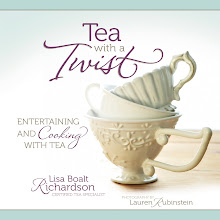Looking good in a hairnet, wouldn't you say? Today we headed to a tea refinery plant. This is where the aracha is taken for final drying, sorting, and blending. Again all of this is done by machine. Our group was asked to wear hairnets (interesting look for all), take off our shoes, and put on slippers to keep the facility clean. Here I am holding the finished tea-Sencha after final processing.
We were allowed to peer through large glass windows on the second floor at the processing center below.
It was quite impressive all the machinery used for final processing.
From there we left to go to the Shizuoka Tea Ichiba Tea Market which is where over 200 companies come to bid on about 1,500 kinds of tea in one day.
We watched a film of the auction process. When the doors are open to the buyers, there is a huge stampede to the auction tables to start cupping and bidding. It reminded me of videos you have seen on TV on Black Friday as the eager shoppers rush through the doors to get a great deal! After the film the men in charge so kindly explained the bidding process to us.
Each hat color represents a different position: the man in the yellow hat represents the broker, the man in the green hat represents the seller, and the man in the blue hat represents the buyer.
The tea is weighed out for cupping (professional way of tasting teas) using a scale and Japanese coins as the counter weight. The broker uses an abacus to tell the seller what price the buyer is willing to purchase the tea for. It was amazing to watch how quickly they moved the wooden pieces around on the abacus to calculate the price. The seller then decides if that price is good or he wants to negotiate further. The bidding stops when the parties all agree to the price.
Instead of shaking hands to seal up a business deal, all the men clap three times in unison and the deal is done! After the film and demonstration, our group was in store for a treat. Mr. Yamanashi, our host and man in the blue hat, had prepared for us to do a special cupping of his teas.
 We headed down to the auction room where rows of stainless steel-topped tables lined the room. It was exciting to be in the same place where teas were sold. We had the opportunity to see and cup side-by-side different quality levels of the same tea to compare the difference. I always love to compare different qualities of the same tea side-by-side. Your palate can really tell the difference if you do it this way.
We headed down to the auction room where rows of stainless steel-topped tables lined the room. It was exciting to be in the same place where teas were sold. We had the opportunity to see and cup side-by-side different quality levels of the same tea to compare the difference. I always love to compare different qualities of the same tea side-by-side. Your palate can really tell the difference if you do it this way. Some of the biggest part of tasting is actually smelling. Here you can see, we not only smell the dry leaf, but the wet leaf as well. The leaves will speak to you as to their quality and freshness.
How honored I was to meet and talk with these men in the Japanese tea industry. To my immediate right is Mr. Yamanashi, our host and President of Yamaichi Trading Company. To his right is his Taiwan friend Jackson Huang who arranged the Japanese portion of the trip for us. To my immediate left is Mr. Enomoto who is a partner with Mr. Yamanashi. To his left is Mr. Katsutaro who is now retired, but was an expert instructor on how to harvest and machine process tea.
Mr. Yamanashi was so kind to give all of us a big bag of samples of 10 different kinds of tea in varying grades. There was a friendly rival between he and Jackson Huang. He told me laughing in his best English after he gave me my samples, "I am the best host" while pointing over to his friend Jackson. It was funny to watch these old friends kid with each other! I kiddingly agreed with Mr. Yamanashi that he was "the very best host indeed."
Stay with me for part 2 of this wonderful day. I will show you a hojicha roasting facility and take you to a Thai dinner with my fellow tea friends.
Happy Sipping and Still Trying to Figure out how an Abacus Works, Lisa

























Thanks for sharing your tea adventure. I have a feeling what I am going to see in Taiwan won't be as shiny and big a production as this.
ReplyDeleteHi Marilyn, most of Taiwan teas are hand processed so the machinery isn't so grand. However, I was able to get up close and personal with the tea leaf processing in Taiwan. When are you going?
ReplyDeletevery useful stuff about tea processing and tea stuff. Thanks for sharing this.
ReplyDeleteAll this information is so great. Thanks for sharing all the cool details with us!
ReplyDeleteDearest Lisa,
ReplyDeleteQuite impressive again, they organize everything so well into the details. That's what Japanese are MASTERS in.
Lots of love,
Mariette